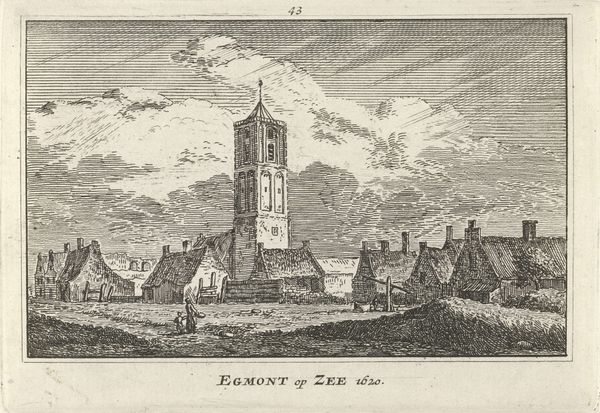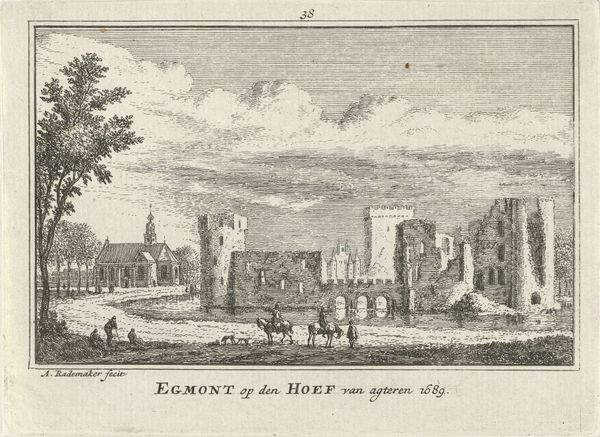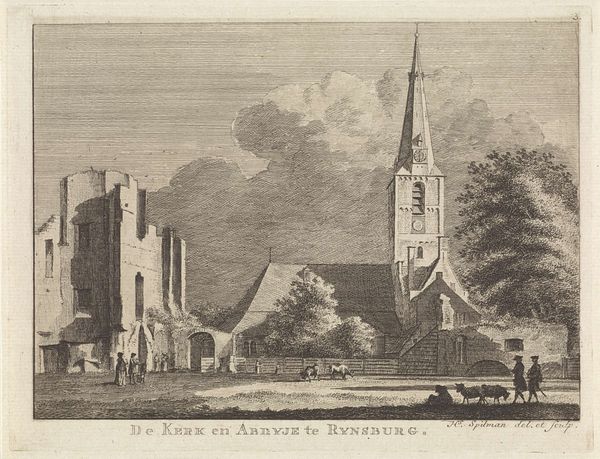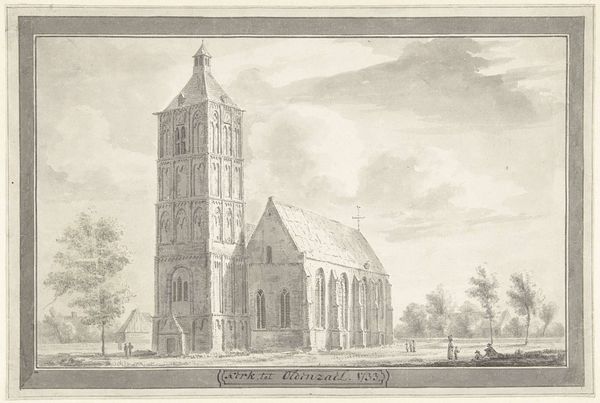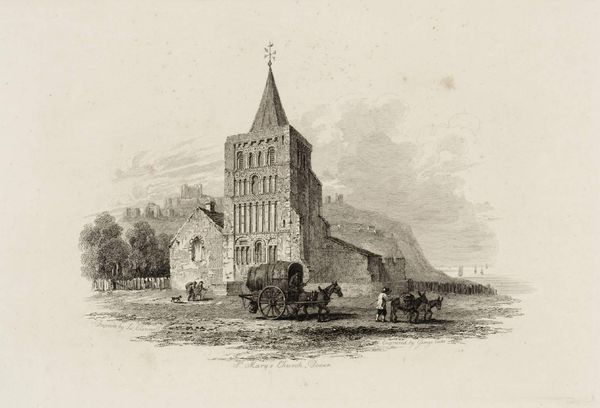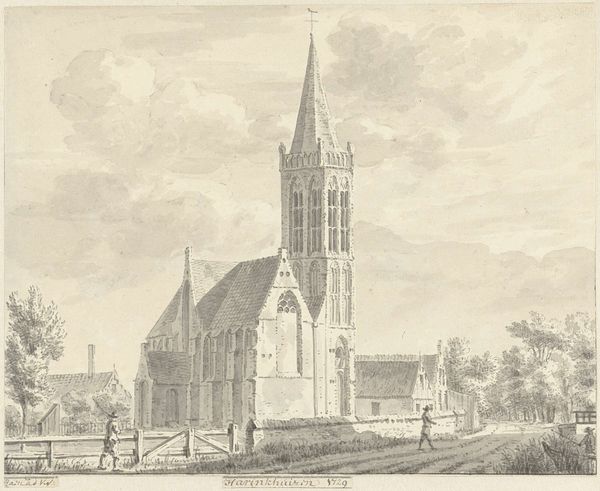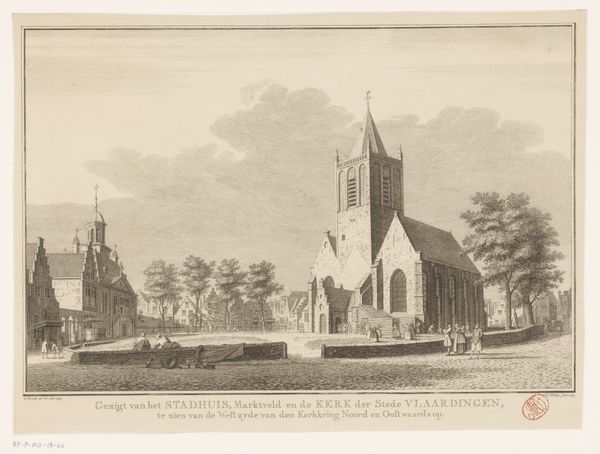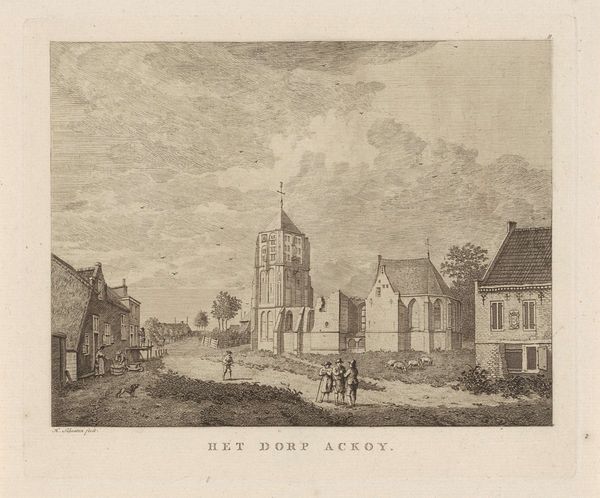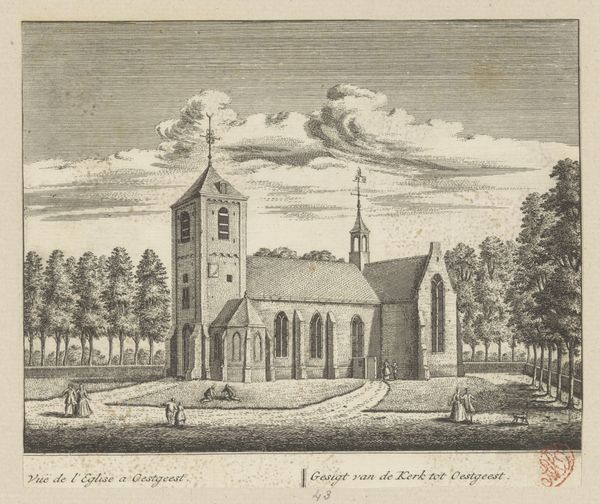
drawing, print, pen, engraving
#
drawing
#
dutch-golden-age
# print
#
pen sketch
#
old engraving style
#
landscape
#
line
#
pen
#
cityscape
#
engraving
Dimensions: height 80 mm, width 115 mm
Copyright: Rijks Museum: Open Domain
Abraham Rademaker made this print called 'Gezicht op Egmond aan Zee' in 1620. This etching shows the church in Egmond aan Zee, a village on the Dutch coast. But this isn't just a straightforward depiction of a building; it's a window into a time of religious and political upheaval. Consider the ruins next to the still-standing church tower. This image speaks to the history of the Eighty Years' War, in which the Protestant Dutch Republic fought for independence from Catholic Spain. The destruction of church property was a common occurrence during this conflict, as religious spaces became symbols of power and targets of iconoclasm. Rademaker's choice to include these ruins might be read as a comment on the fragility of institutions and the impact of war on everyday life. As art historians, we look to period documents and other visual sources to reconstruct the context in which this print was made. By understanding the social and political forces at play, we can begin to understand the many layers of meaning embedded in this seemingly simple image.
Comments
No comments
Be the first to comment and join the conversation on the ultimate creative platform.


